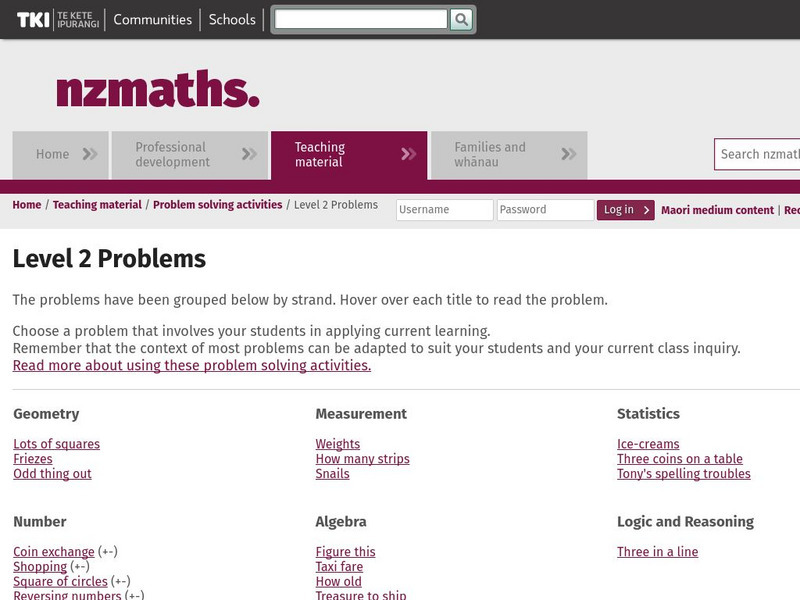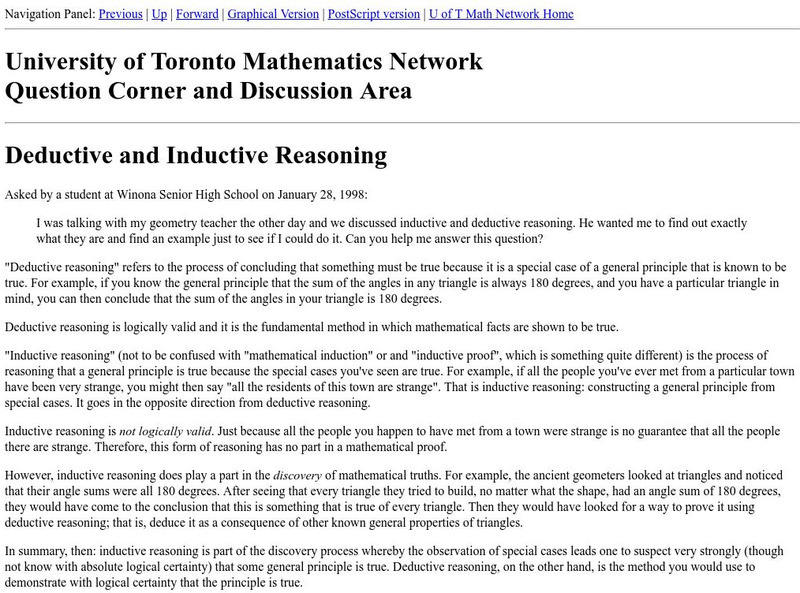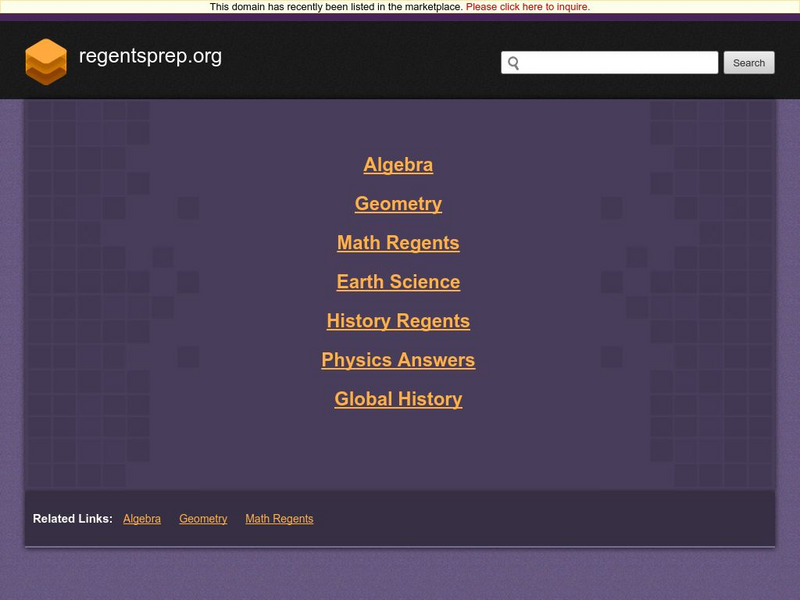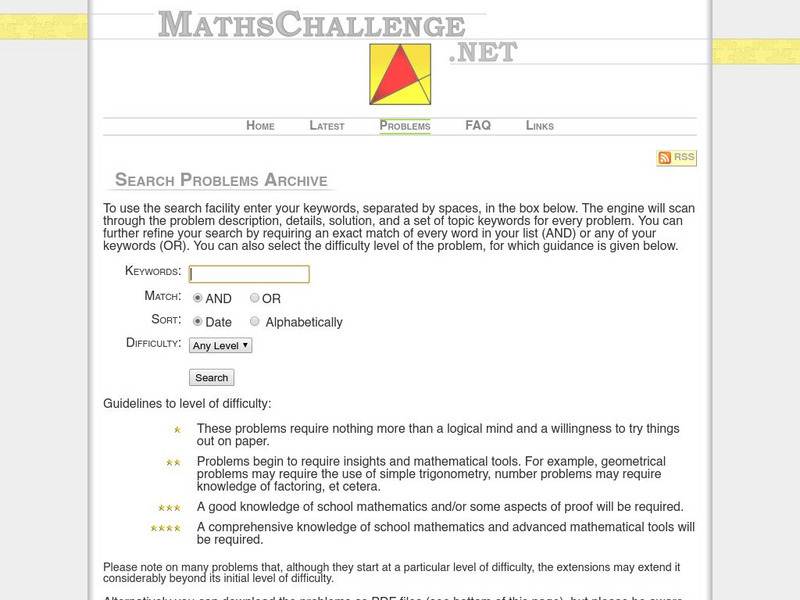Hi, what do you want to do?
Curated OER
The 500 Problem
Students explain face, place and total value of numbers as well as solve three-digit subtraction problems. Before trying answer the problem Students must be able to examine that the same digit is used to represent different amounts.
Curated OER
Graphing Heart Rates
Students explore heart rates. They record pulse rates, predict which exercises cause a faster heart rate, make a chart, and graph the results. Students write an essay using the data to support their predictions. They write a hypothesis...
Curated OER
Probability, Genetics and the Human Condition
Young scholars explore the concept of probability as it relates us to be able to make predictions about future events based upon our knowledge of past outcomes. They have an innate appreciation for probability. Students make a connection...
Curated OER
Does Cloud Type Affect Rainfall?
Student uses MY NASA DATA to obtain precipitation and cloud type data. They create graphs of data within MY NASA DATA. They compare different cloud types as well as precipitation types. They describe graphs of the precipitation and cloud...
Curated OER
Ocean Currents and Sea Surface Temperature
Students use satellite data to explore sea surface temperature. They explore the relationship between the rotation of the Earth, the path of ocean current and air pressure centers. After studying maps of sea surface temperature and ocean...
Curated OER
Concrete Canoes
Students explore and analyze the relationship of buoyancy and displacement needed to make an object float. They examine various boat designs, then design and build clay and aluminum boats that hold a cargo of marbles.
Curated OER
Cloud Shadows
Students classify clouds as transparent, translucent or opaque. They conduct an experiment to determine the visual opacity of several classroom objects and then conduct further observations of clouds.
Curated OER
Piece of the Sky: Introduction for Making S'COOL Observations
Learners observe and discuss cloud cover. They identify percent of cloud cover, calculate cloud cover by fraction and convert to a percent, and compare their models with the current real sky cloud cover.
Curated OER
Cloud Observation and Graphing
Students identify the three major cloud groups. They are introduced to the three main cloud types and spend a week making and recording observations of clouds. Students produce a graph that presents their findings and conduct research...
Curated OER
Creating a Thematic Map Using S'COOL Data
Students observe weather patterns, collect data, and make a weather predictions for various locations on a map.
Curated OER
German Immigration: Part I
Students develop a construct and can come to an understanding of the principle causes of European immigration to the United States during the three decades between 1930 and 1960.
Curated OER
Estimating Altitude of Water Cloud Base
Students conduct an experiment to determine dew point and use a formula to detemine altitude. They construct a chart and predict what altitude clouds would form, given the dew point on the ground.
Curated OER
Twisters
Young scholars differentiate between the terms 'tornado watch' and 'tornado warning' and simulate the conditions that produce tornadoes. They read "Night of the Twisters" by Ivy Ruckman and conduct an experiment using two-liter plastic...
US Department of Education
Helping Your Child Learn Math: Math for the Fun of It
This compilation of math activities engages parents and children in the use of math whenever they are at home. Packed with concise, high interest activities, related illustrations, detailed "parent pointers," and easy to following...
Other
Nz Maths Problem Solving Lesson Plans: Level 2
NZMaths is a New Zealand teacher resource that provides lesson plans for students in algebra, geometry, measurement, numbers, statistics, logic and reasoning.
Other
Nz Maths Problem Solving Lesson Plans: Level 1
NZMaths, a New Zealand teacher resource, provides lesson plans for students in algebra, geometry, measurement, numbers, statistics, logic and reasoning.
University of Toronto (Canada)
University of Toronto: Deductive and Inductive Reasoning
Part of a University of Toronto website, this page defines and describes deductive and inductive reasoning in solving mathematical problems.
Oswego City School District
Regents Exam Prep Center: Logic
Understanding mathematical language in problem solving can be a difficult concept to grasp. Sharpen your logical reasoning skills at this test prep site that explains the terms: if, and, or, implies, and only if, as they relate to math....
National Council of Teachers of Mathematics
The Math Forum: Ask Dr. Math: Deductive Reasoning
An explanation and description of deductive reasoning in solving problems at this site from The Math Forum. Simple and helpful information.
Maths Challenge
Maths challenge.net: Right Angle Reasoning
A geometry problem for students to use their mathematical reasoning skills to explain a right triangle property.
National Council of Teachers of Mathematics
Nctm: Figure This: Don't Fall In
Have you ever wondered why manhole covers are round? Believe it or not, there is a logical, mathematical reason. See if you can figure it out in this NCTM Math Challenge for Families activity. A one-page activity with suggested life...
Math Slice
Math Slice: Smart Guess Game
Can you guess the correct number between 1 and 99 in less than 30 tries? Play this fast paced, interactive game that tests your number sense and reasoning skills. If your are a great guesser, your name will be posted.
Maths Challenge
Maths challenge.net: Counting Triangles Again
A "one star" geometry problem that requires finding the visual pattern and applying logic with basic math skills to find triangles in a pattern.
University of Cambridge
University of Cambridge: Nrich: Instant Insanity
Excellent interactive challenge working with cube nets to stack them in a specific order. Manipulate the cubes online to solve the problem.




























